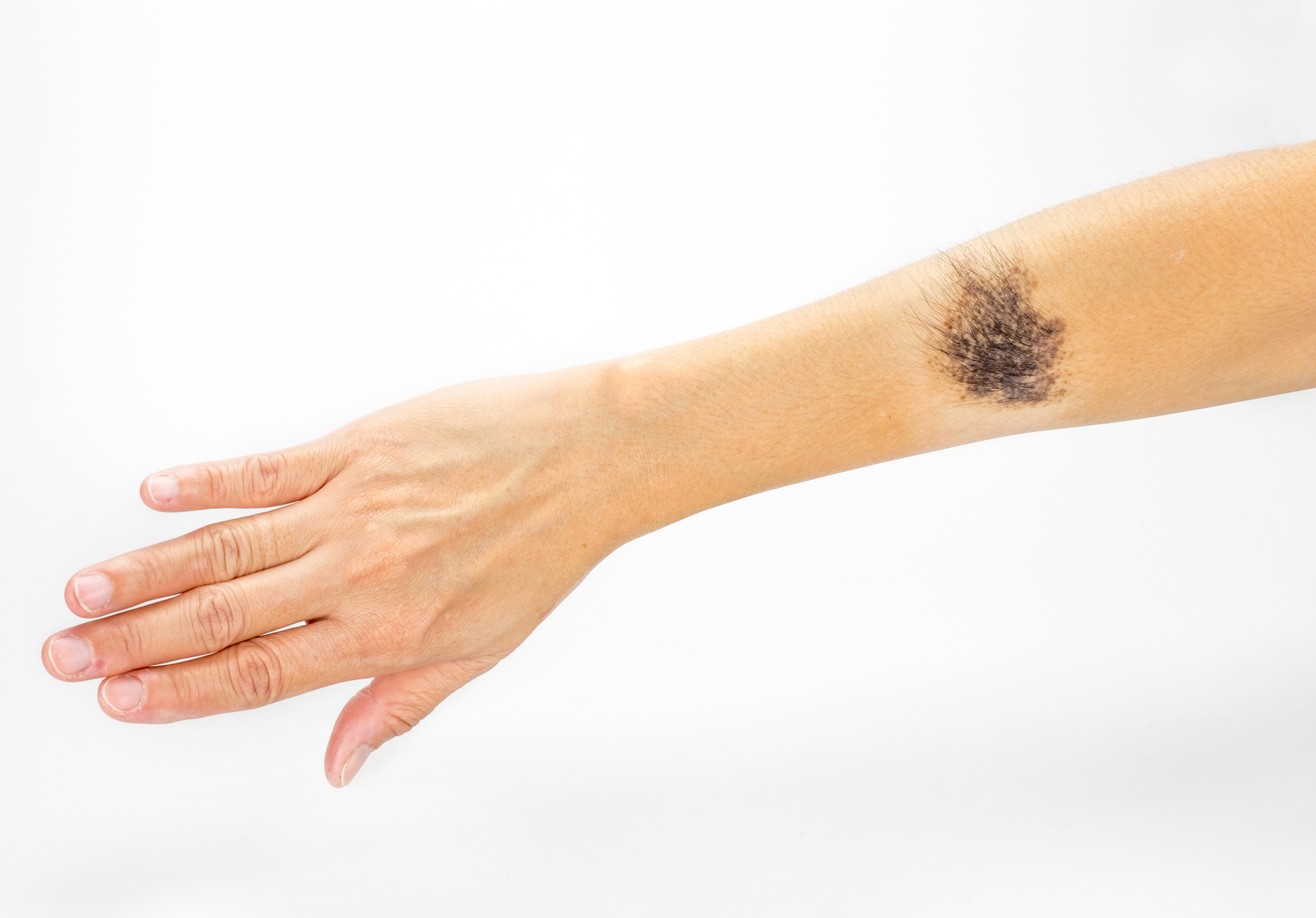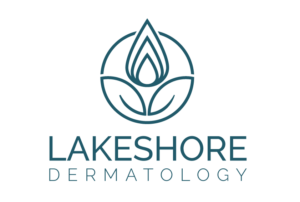A birthmark is a spot or patch on your skin that looks different from the skin around it. Birthmarks are very common and come in many different shapes and sizes. Most birthmarks are present at birth, which is where they get their name. Not all birthmarks are present at birth — some develop weeks later.
Birthmarks are very common but not everyone has one. An estimated 10% of all babies born around the world have a specific birthmark called a hemangioma.
Birthmarks may be caused by extra pigment-producing cells in the skin or by blood vessels that do not grow normally. Most birthmarks are painless and harmless. In rare cases, they can cause complications or are associated with other conditions.
CAUSE:
The exact cause of why birthmarks develop is unknown. In some cases, birthmarks form because:
- Blood vessels don’t form as expected during fetal development (vascular birthmarks).
- Melanocyte cells (the cells that give your skin color) grow in clusters (pigmented birthmarks).
- A type of birthmark runs in your biological family history (genetic predisposition).
- An underlying medical condition causes birthmark development (nevus sebaceous syndrome, skin cancer or neurofibromatosis).
There are two main categories of birthmarks — vascular birthmarks and pigmented birthmarks:
Vascular birthmarks:
These birthmarks are made of blood vessels that didn’t form as expected during fetal development. This type of birthmark is also known as a red birthmark. Color from the birthmark comes from blood vessels in your skin. These may be present at birth or develop shortly after birth.
Vascular birthmarks include:
Strawberry hemangiomas (strawberry birthmark, nevus vascularis, capillary hemangioma, hemangioma simplex) might appear anywhere on your body, but are most common on your face, scalp, back or chest. They consist of small, closely packed blood vessels. They might be absent at birth and develop after several weeks. They usually grow rapidly, remain a fixed size and then fade. In most cases, strawberry hemangiomas disappear by the time a child is 9 years old. Some slight discoloration or puckering of the skin might remain at the site of the hemangioma.
Cavernous hemangiomas
Cavernous hemangiomas (angioma cavernosum, cavernoma) are similar to strawberry hemangiomas but extend deeper below the surface of your skin. They might appear as a red to blue spongey mass of tissue filled with blood. Some of these lesions disappear on their own, usually as your child approaches school age.
Port-wine stain birthmarks
Port-wine stain birthmarks are flat, purple-to-red birthmarks made of dilated blood capillaries. These birthmarks occur most often on your face and might vary in size. Port-wine stains are permanent (unless treated) and might thicken or darken over time. These may cause self-esteem concerns if they’re in a prominent area of your body.
Salmon patches
Salmon patches (stork bite or angel kiss birthmarks) appear on 30% to 50% of newborn babies in the U.S. These marks are small blood vessels (capillaries) that are visible through your child’s skin. They’re most common on their forehead, eyelids, upper lip, between the eyebrows and the back of their neck. These marks fade as your child grows.
Pigmented birthmarks:
Pigmented birthmarks are made up of a cluster of melanocyte cells (the cells that give your skin color). These birthmarks have a color that’s different from the color of the rest of your skin. Pigmented birthmarks might range from brown or black to bluish.
Pigmented birthmarks include:
- Dermal melanocytosis (formerly called Mongolian spots) are usually bluish and look like bruises. They often appear on the buttocks and/or lower back, but they sometimes appear on your trunk or arms.
- Pigmented nevi (moles) are raised growths on your skin that are the same color as your natural skin tone, or brown or black. Moles can appear anywhere on your skin, alone or in groups.
Congenital nevi
Congenital nevi are moles that are present at birth. About 1 in 100 people are born with one or more moles. These birthmarks have a slightly increased risk of becoming skin cancer, depending on their size. Larger congenital nevi (more than 20 centimeters) have a greater risk of developing into skin cancer than smaller congenital nevi. All congenital nevi should be examined by a healthcare provider, along with any changes to these birthmarks.
Café-au-lait spots
Café-au-lait spots are light tan or light brown spots that are usually oval in shape. They appear at birth but might develop in the first few years of a child’s life. One café-au-lait spot isn’t cause for concern, but multiple spots larger than a quarter may be a sign of an underlying condition called neurofibromatosis.
Birthmarks look different on each person and vary in size, shape and color. Features of a birthmark include:
- A flat or raised mark on your skin.
- The mark is the size of a pinhead to the size of your fist.
- The color of the mark is different from the skin around it (pink, red, purple, tan, brown or black).
- Pigmented birthmarks might increase in size as you age and change colors, especially after sun exposure and during times of hormone changes. They can become itchy and might occasionally bleed when injured.
Complications:
Complications of pigmented birthmarks can include psychological effects when the birthmark is located in a prominent area of your body, like on your face. This can affect your self-esteem and how you feel about your appearance.
Pigmented birthmarks also can pose an increased risk of skin cancer. A healthcare provider should check any changes that occur in the color, size or texture of a mole. See a provider right away if you have any pain, bleeding, itching or swelling of a birthmark.
Diagnosis :
A healthcare provider can diagnose a birthmark after a physical exam to get a closer look at the mark on your skin. If your birthmark is deep within your skin, a provider can confirm it with an imaging test like an MRI (magnetic resonance imaging), ultrasound or CT (computed tomography) scan. A skin biopsy might be necessary if you have a birthmark that changes in size or shape and may be a sign of skin cancer.
Prevention
There’s no way to prevent the development of birthmarks. You can reduce your risk of birthmarks changing color or developing into skin cancer from sunlight exposure by protecting your skin from the sun’s ultraviolet rays. Wear sunscreen and protective clothing when you’re outside to reduce your risk. You can also avoid sun exposure during the daytime when the sun is at its brightest, between 10 a.m. and 4 p.m.
Treatment to remove a birthmark may include:
- Cryotherapy.
- Laser removal.
- Surgical removal.
- Injections of cortisone.
A healthcare provider can review your birthmark and let you know what your best treatment options would be. Providers usually treat childhood birthmarks after a child reaches 6 years old. They might treat them earlier if they affect the function of your child’s organs, like their vision or breathing.
You may be at risk of scarring if you have a birthmark surgically removed. Surgeons take extra precautions during procedures to reduce your risk of scarring. You may also be at risk of developing an infection after a removal procedure. To avoid these risks, talk to your surgeon or provider about how you can take care of your skin as it heals after treatment.


